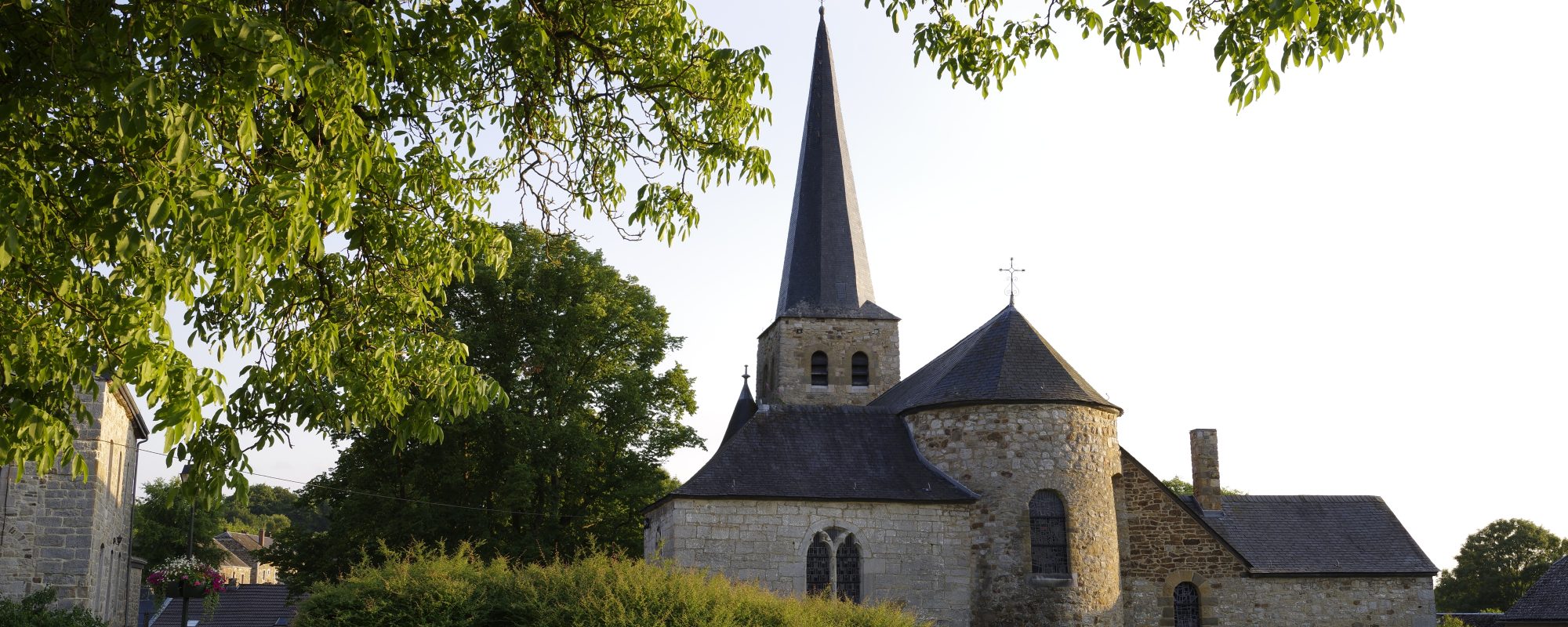Church of Sainte-Walburge in Wéris
This 11th century Romanesque church, which has undergone major alterations over the years, is built of limestone, iron sandstone and pudding stone in the grounds of the former cemetery.

This 11th century Romanesque church, which has undergone major alterations over the years, is built of limestone, iron sandstone and pudding stone in the grounds of the former cemetery.
Within the enclosure of the old village cemetery, the 11th century Romanesque church marks the historic centre of the village. The building is built of limestone, pudding and iron sandstone rubble. The use of pudding, a rock composed of pebbles bound together by a very resistant natural cement, is one of the particularities of Wéris. Extracted from local quarries, pudding stone is found in the masonry of the church and several traditional farmhouses, as well as being used in the construction of dolmens and menhirs!
The church of Sainte-Walburge is characterised by a set of volumes consisting of a tower, three naves, a semi-circular choir flanked by a sacristy and, later, a gothic chapel. The square tower is the oldest part. In the past, it was pierced with loopholes and was used to shelter the inhabitants of Wéris in case of danger.
Inside the building, the vaulted apse (quarter sphere) is a particularity of the Romanesque period.
The church has undergone significant alterations over the centuries, notably in the 16th and 18th centuries, as well as a skilful restoration in the mid-20th century.
It has been listed as a historical monument since 1938.
For more information, see our heritage page.
EGLISE SAINTE-WALBURGE
Pl. de la Pierre, 12 – 6940 Durbuy
MAISON DU TOURISME FAMENNE-ARDENNE OURTHE & LESSE
Place de l’étang,15 – 6900 Marche-en-Famenne
+32(0)84/34 53 27
OFFICE COMMUNAL DU TOURISME ET SYNDICAT D’INITIATIVE DE DURBUY
Place aux Foires, 25 – 6940 Durbuy
+32(0)86/66 01 80
+32(0)86/21 24 28
The association Les Plus Beaux Villages de Wallonie (The Most Beautiful Villages of Wallonia) oversees a network of 32 villages, bearers of a strong territorial identity and reflecting traditional architecture. It is committed to promoting the rural, cultural and natural heritage of Wallonia and is a part of the development of local and responsible tourism.
More information